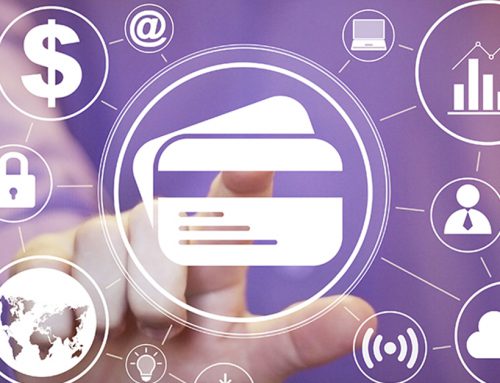In today’s world of buzzwords, having a sales process that is easy to use is probably the one that is most referenced. Your company doesn’t want to put any obstacles (real or imaginary) in the way of the people in your marketplace to do business with you. Simply put, making the handing over of their money as easy as pie.
Delving deeper, it is usually in the design of (software) solutions that provides a frictionless user experience with your company and should be a top priority within every organization. Even more important now with all that is happening economically, you want to have the right solution in place to facilitate that for business.
While taking payments online have already gone through a major evolution recently eliminating much of the frictions, the entire checkout process at a merchant can still be a complex and not very user-friendly experience. That is why we have developed for the online company that wants to move their monthly volumes from tens of thousands to hundreds of thousands, the Complete ECommerce Suite, FigPay360.
We hold that integrating all those steps of the online sales process into a single, fully frictionless experience should not be that complex, as all technology exists already today. Evolutions need to take into account however security, data privacy, the value of data and functionality infrastructure that are essential to the card processing system itself.
The advantages of this FigPay360 evolution towards a frictionless checkout process are however numerous both for the merchant and for the consumer:
- Reduces waiting time for payment processing and allows a faster checkout (e.g. avoid having to enter your credit card data for each transaction or input online discount codes). The easier it is to pay, the more customers are going to spend (as there is less thought and consideration given to purchases).
- Allows a more detailed analysis of customer’s spending (e.g. in bank PFM tools)
- Reduces customer’s cognitive strain (no need to remember PIN code, no need to think about loyalty card or coupons, no need to safely store your warranty receipt…), making the troublesome checkout process less visible and painful.
- Reduces churn and shopping cart abandonment. (according to SaleCycle, up to 75% of customers abandon their online shopping carts without making a purchase)
It is therefore likely that an additional layer of abstraction should be introduced in the resolve of becoming frictionless:
- The first problem is the onboarding of the payment gateway. The below described intermediary layer (for selecting payment method) could also play a role here, as this layer could onboard a single virtual card on these payment gateways, via well-documented open standard API, the onboarding could be made freely available for any website to connect.
- A second problem to be solved is selecting the right payment method. A rule-based intermediary layer could do the selection of the best payment method automatically for the user based on prior interactions with the company.
- A third problem is to get all necessary information from you the merchant to apply the rules for payment method selection. Connection to the Payment Gateway API, was based on the payment reference, all info can be recuperated in a secure way. This way the existing payment infrastructure does not need to be adapted and information can be automatically retrieved by the above intermediary layer.
- Finally, we have the problem of authentication. For small amounts, people want a very frictionless experience (maximum 2-3 seconds, but for small amounts this is often still considered too long), but for large amounts, people like a whole payment ceremony, as it gives them a sense of security and comfort. Good AI-based models are however required to ensure that authentication doesn’t become too severe, when shopping at a new merchant for the first time, as the first experience is usually the one that makes or breaks the chances of a continued relationship.
In the end a frictionless sales checkout process can be reduced to 2 distinct end-user steps, i.e. identifying the person doing the purchase and providing consent to exchange info and value. Via the identification, the account number can be derived and security can be enforced, while the consent step gives the payment provider the authorization to retrieve the money, but also to store all associated information in your personal data.
The target for FigPay360 is a frictionless, even invisible, sales checkout process which consists of:
- Wholesale Merchant Processing Utilizing Reliable Revenues Procurement – Nothing can be transacted, no product delivered, no service provided unless the money for such has been successfully transferred. When a company has the ability to take multiple forms of payment (credit, debit, etc.) on their website reliably and not having to pay extra for that online convenience is a win-win in anybody’s book. Having the right Merchant Account and Card Processing abilities are a must for any ecommerce efforts to be successful.
- Reputation Management System Consisting of Proper Reputation Positioning – The impulse to look up a business has shifted from the now-defunct Yellow pages to bringing up a browser and looking them up on Google. Their Google My Business listings come to be a huge factor in what potential customers find out about the company. Your Reputation Management must be robust to be able to bring in those looking for you in your own “backyard”.
- Website Security Seal to Secure the Platform to Transact – Data breaches and hacking of the financial data has unfortunately become a common occurrence, the better you equip your site with SSL Certified encryption and PCI measures the better you are able to protect the data, and grow the confidence of your customers to do business with you, and do it more often.
- Onsite Customer Reviews which Build Confidence – When someone receive an unsolicited testimonial or review about a product or service item, they give to it more weight than if it was in a commercial or promotion piece. Having verified, real-time customers providing those recommendations again builds on that confidence on doing business with a company online.
- Shopping Cart Abandonment Sales Assist Strategies – Cart abandonment is the number one concern and the point of the sale process where merchants lose the revenue. There are several strategies that are available to re-engage the customer and rescue the sale. Instead of recommitting them to do business with you, you can remind them what they want to buy from you.
In order to make the checkout process fully frictionless, all players should consider every step in the process both for themselves, but also for other stakeholders in the process.
At FigPay360 we have, and continue to provide you what you need in today’s market and climate.







